Karnak Temple and Luxor Temple were my next stops after Hatshepsut’s Mortuary Temple and my oh my eyes could not believe their size! Both temples, Valley of the Kings and all the surroundings were part of Thebes, the capitol city of Ancient Egypt.
Karnak Temple Complex / Karnark
Maybe the easiest way to start describing Karnak is that’s it’s the second biggest ancient religious site after Angkor Wat Temple, however whereas Angkor Wat Temple was built circa. 13th century AD, Karnack has had temples since before 1971 BC. There is nothing to little left of the first temples, major construction began during the rule of Senusret I (1971 BC to 1926 BC) and carried on into the Ptolemaic period (circa. 300 – 0 BC) making this a 4000-year-old religious site. It may be truly ancient.
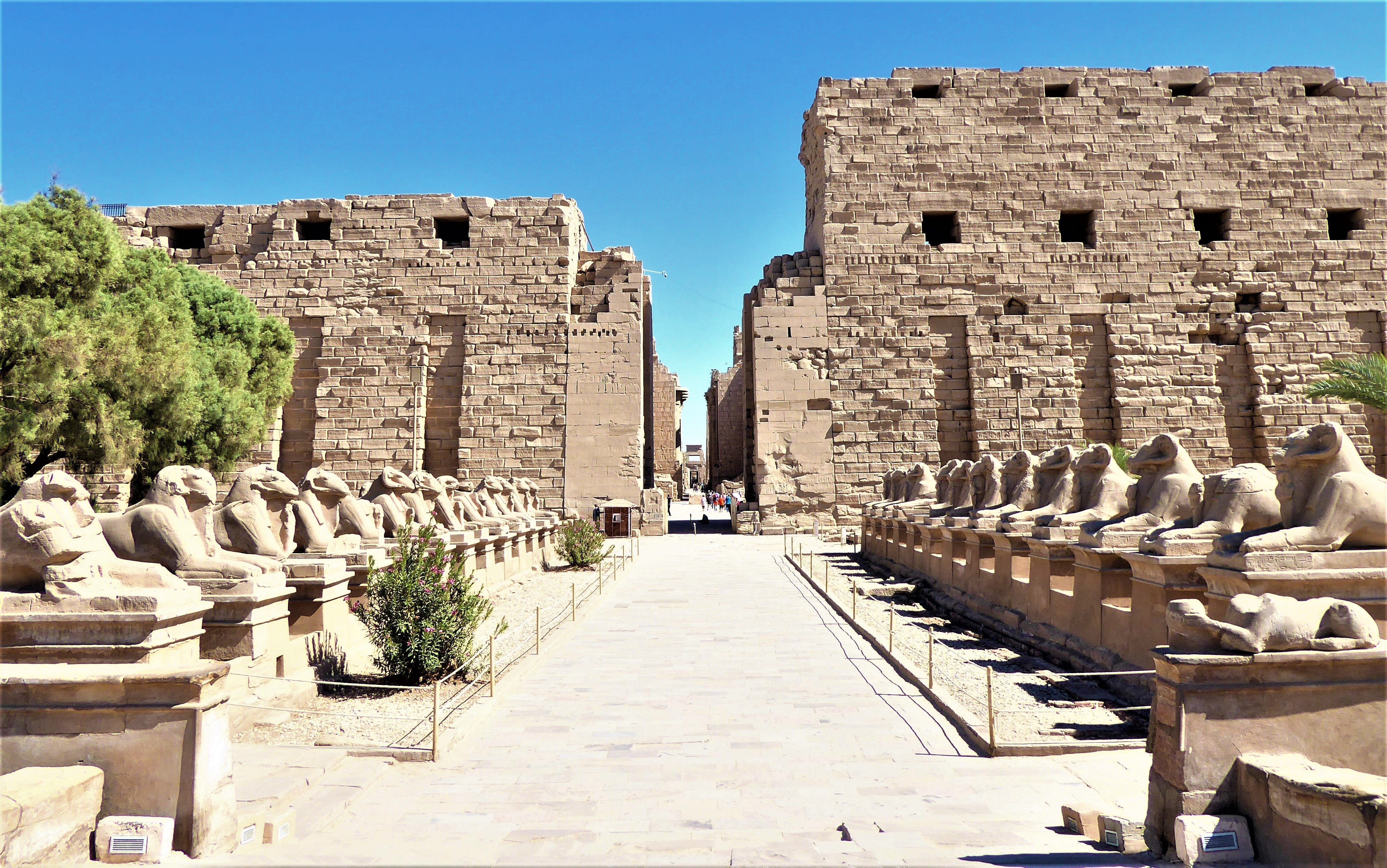

To say the complex is huge is an understatement! Primarily it consists of four sections Precinct of Amun-Ra/Re which is the main part and open to the public and takes up easily 70%, Precinct of Mut (the oldest part), Precinct of Montu and Temple of Amenhotep IV – which is the name use by Akhenaten (Tutankhamun’s father) before he changed his name. As he was such a divisive Pharaoh due to him trying to delete other gods and instead elevate himself and the Aten to create a monotheist religion his temple at Karnack was to all purposes destroyed
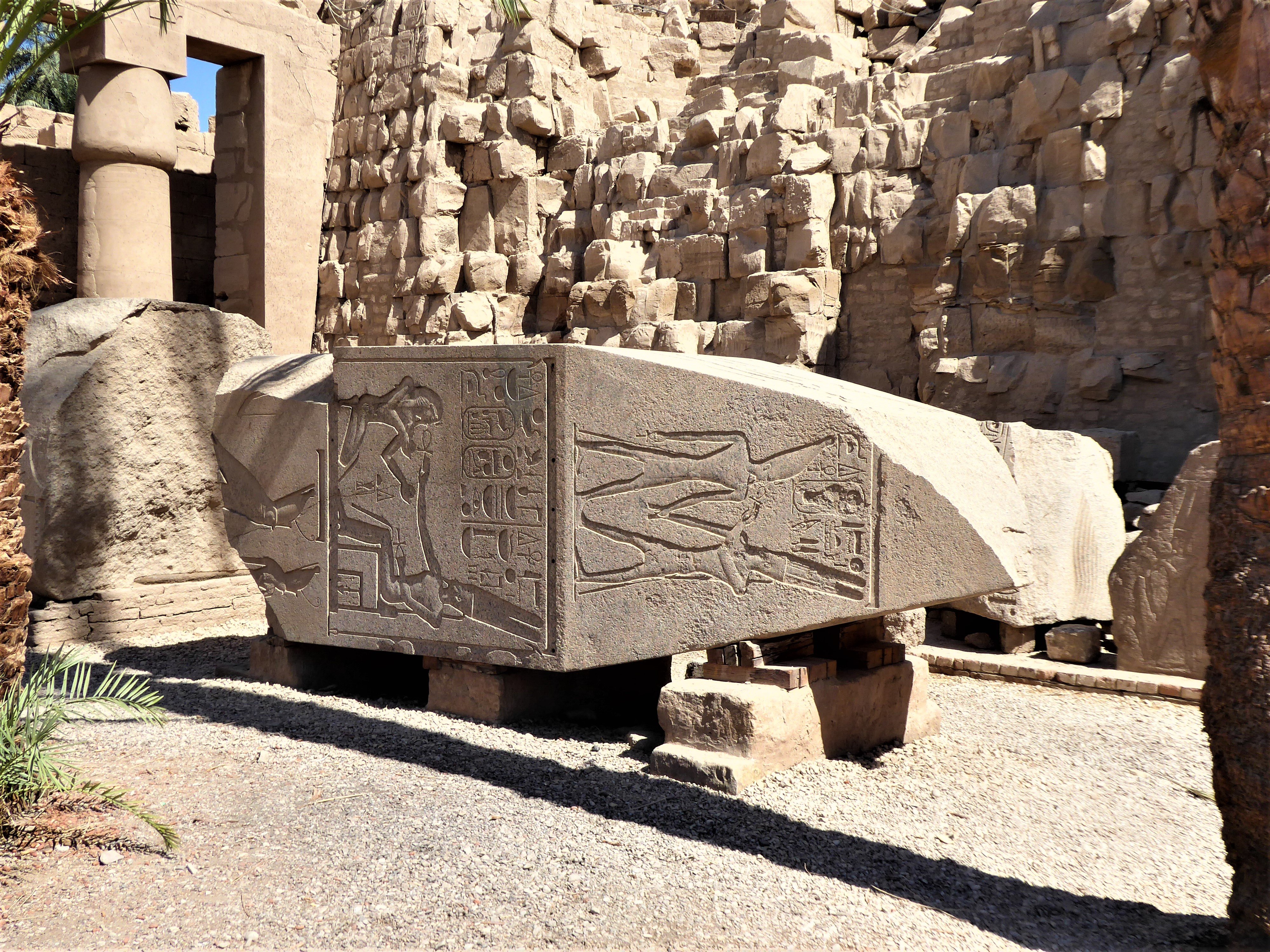
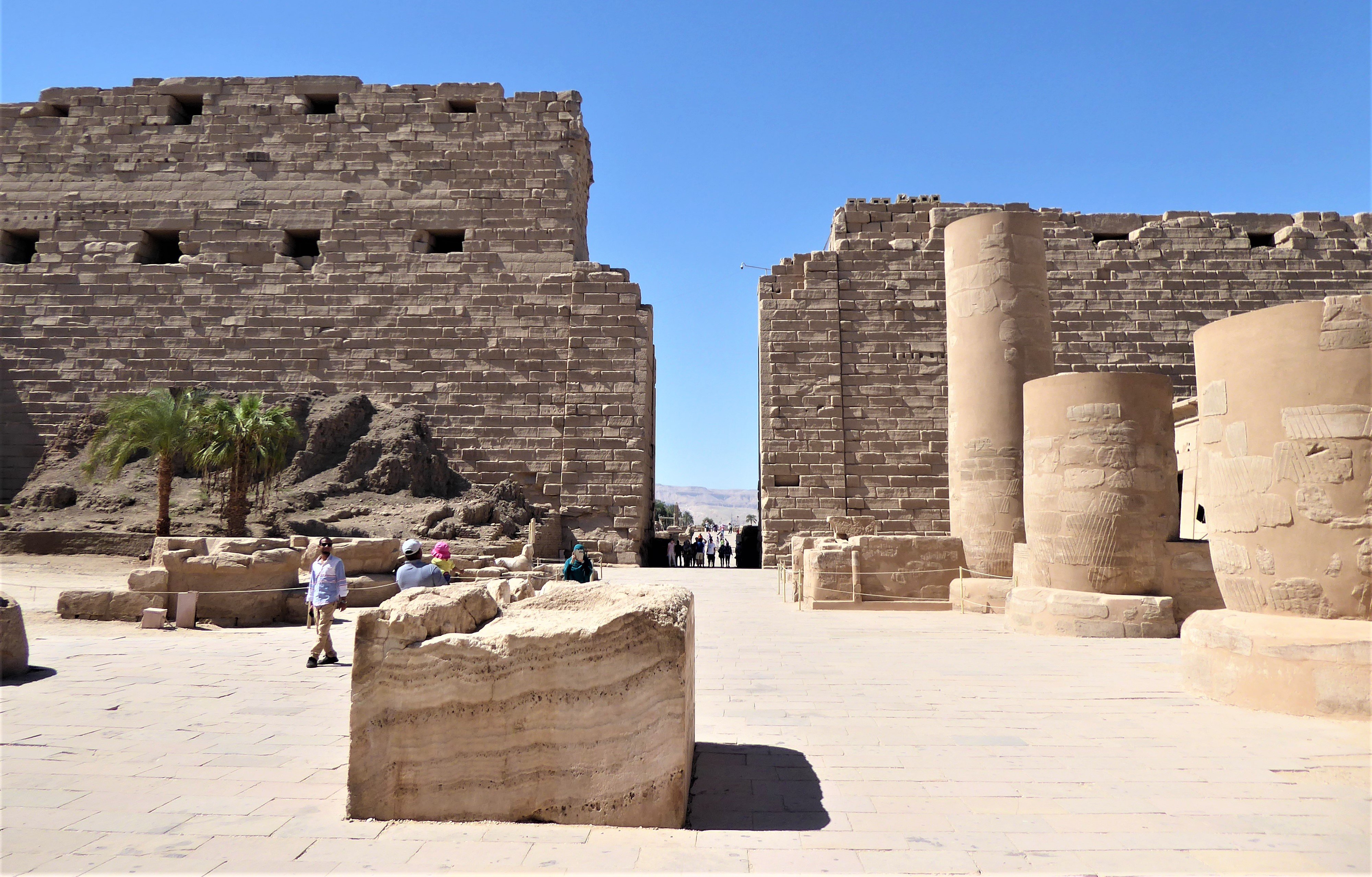
As construction spans over 1500 years and near 30 Pharaohs contributed to the site, including Ramesses the Great / Ramesses II who knew nothing other than going big and bold, it does make the complex challenging to decipher but doesn’t detract from its splendour. I was more than impressed by the entrance of sphinxes leading to the massive pylon entrance which fronts an expansive courtyard with various smaller temples on either side. From this courtyard which has scattered large sculptures, obelisks and pillars on display it leads to the next set of huge pylons and into an astounding part of the complex, main and biggest part too, a hypostyle hall…coincidentally built by Ramesses II…I was in awe!
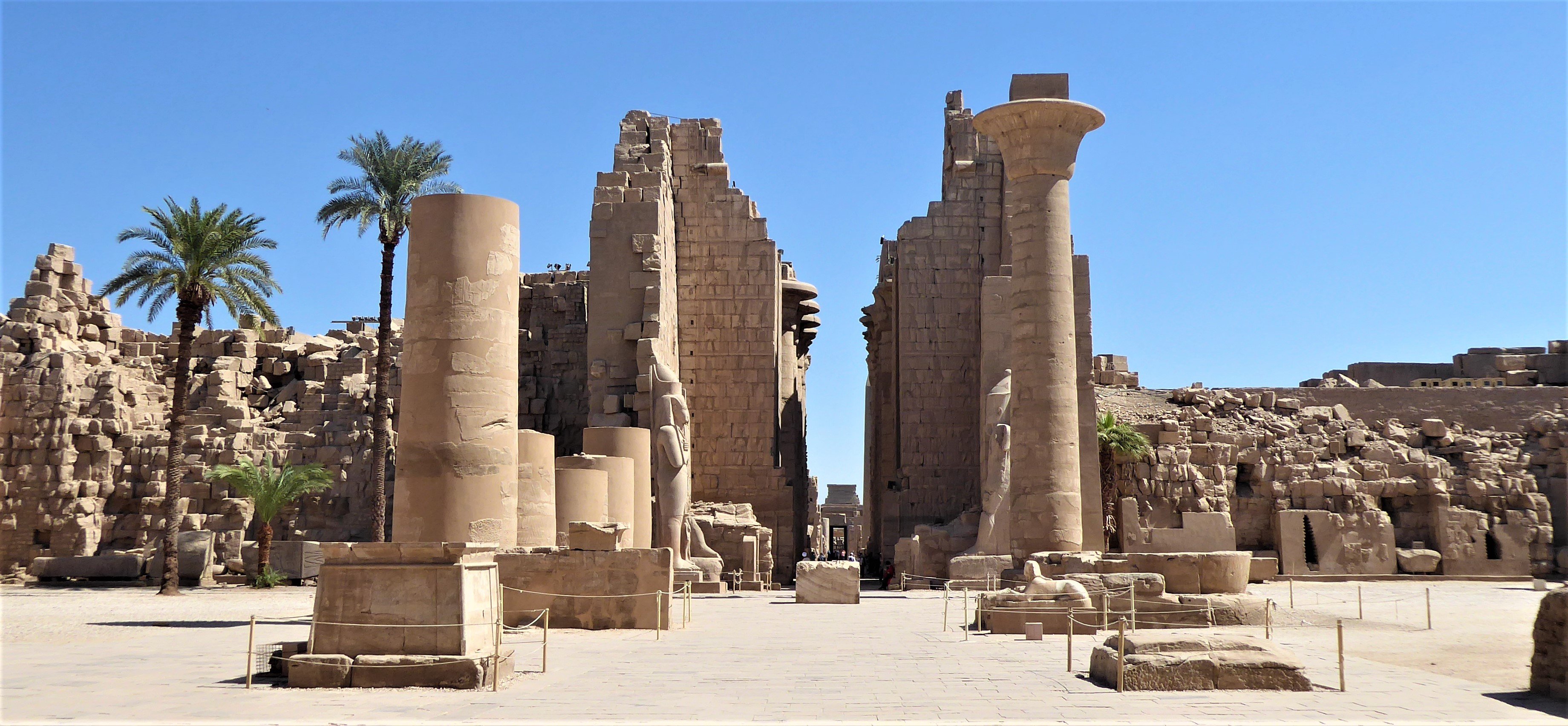
This hypostyle style hall, the biggest part of the complex, built by Ramesses II is astonishing in all respects and loads of detail remains including quite a bit of the colours. This place would have been jaw dropping in its time and if something like this was built in today’s times it would be as impressive if not more than anything in existence, yes, it’s that amazing!
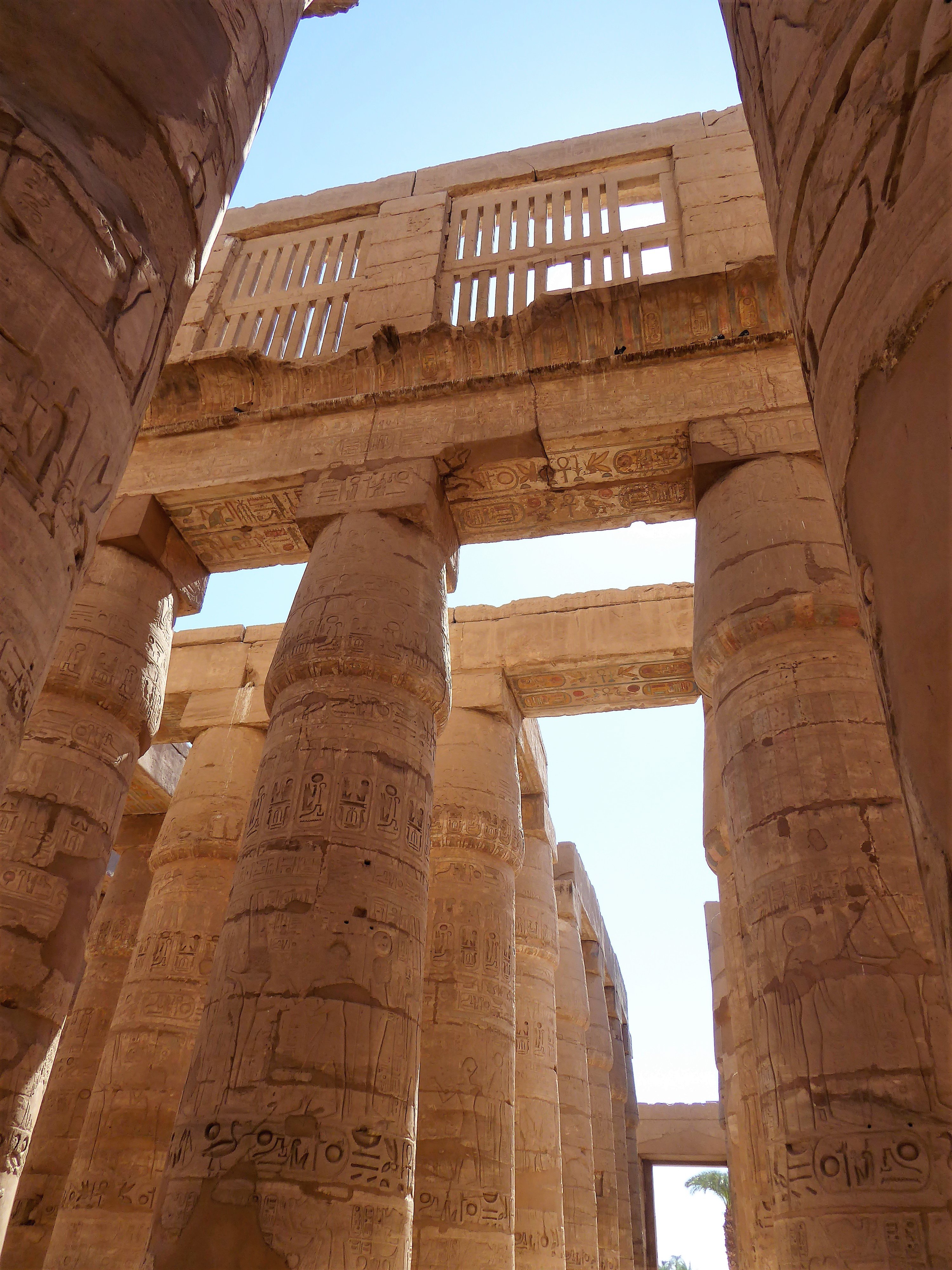
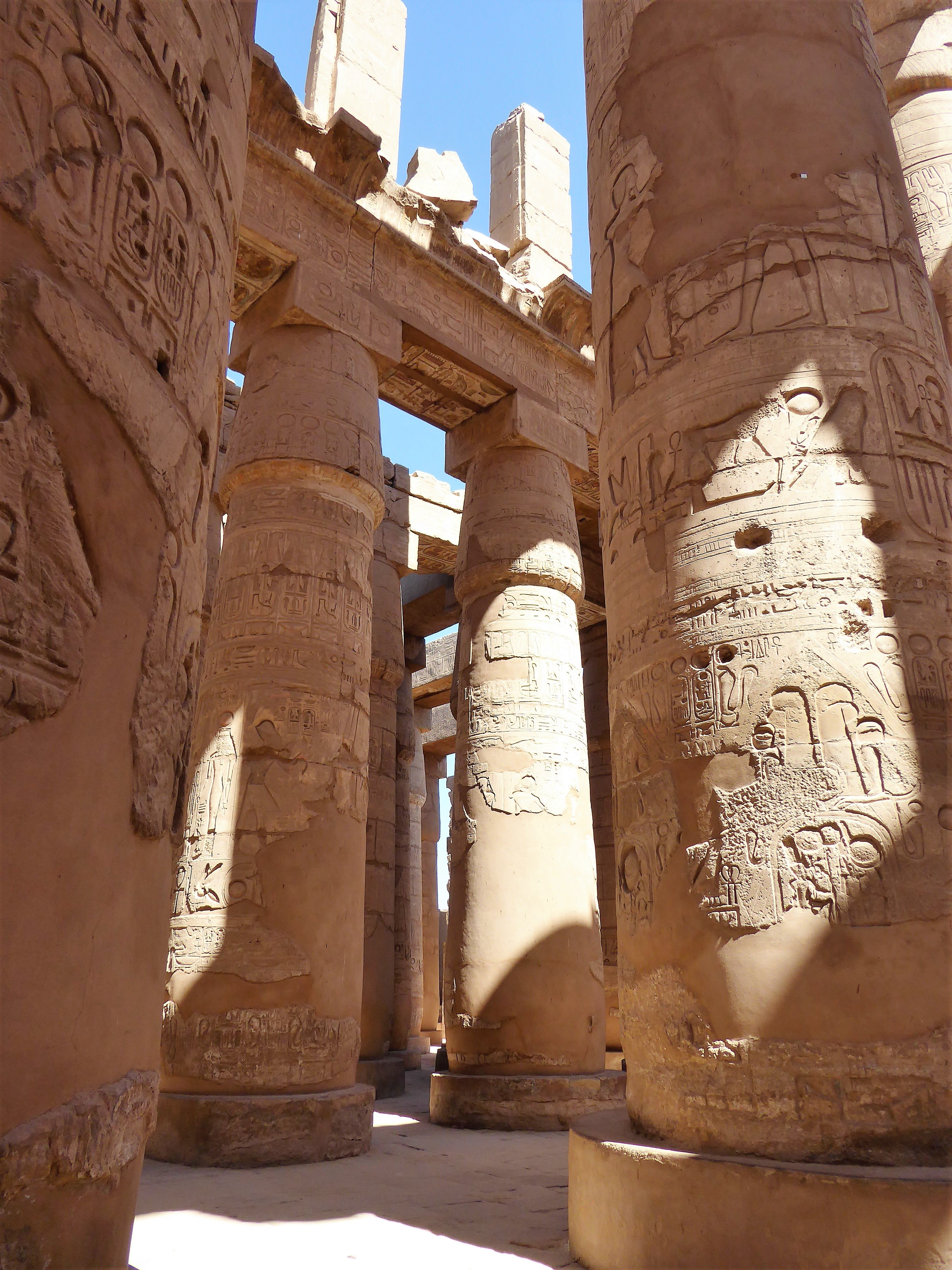
Dedicated to Amun-Re the hall has 134 columns, 122 that are around 10m high, 12m that are 21m high that are 3m in diameter. The cornices/architraves are mammoth and as I write this I’m beginning to think I’m sounding like a stuck record struggle to use “large” superlatives, but any stone cornices/architraves weighing near 70 tons is deserving of the description mammoth! Yes, these cornices/architraves weigh near 70 tons each, with the hall being 5000 square metres that’s thousands of tons!


NB.
Something Mahmoud showed me; Ramesses II’s structures whether temple or anything are distinctive not only in size but also the hieroglyphics are recognizably cut deeper into the stone, maybe double or more compared to the usual.
Through the hall is another courtyard however it differs from the first in that this whole section is a mix-match of courtyards, temples, large statues, obelisks (Hatshepsut additions), walls, pillars and even a manmade cistern lake which would have supplied the complex with water, call the Sacred Lake of Precinct of Amun-Re. The rest of the complex is out of bounds while restoration work carries on, I think this will take years, but I was very happy to see the work being done – when it’s finished you will then get a fraction of an idea of the scale and wonder of this place…it’ll fantastic!

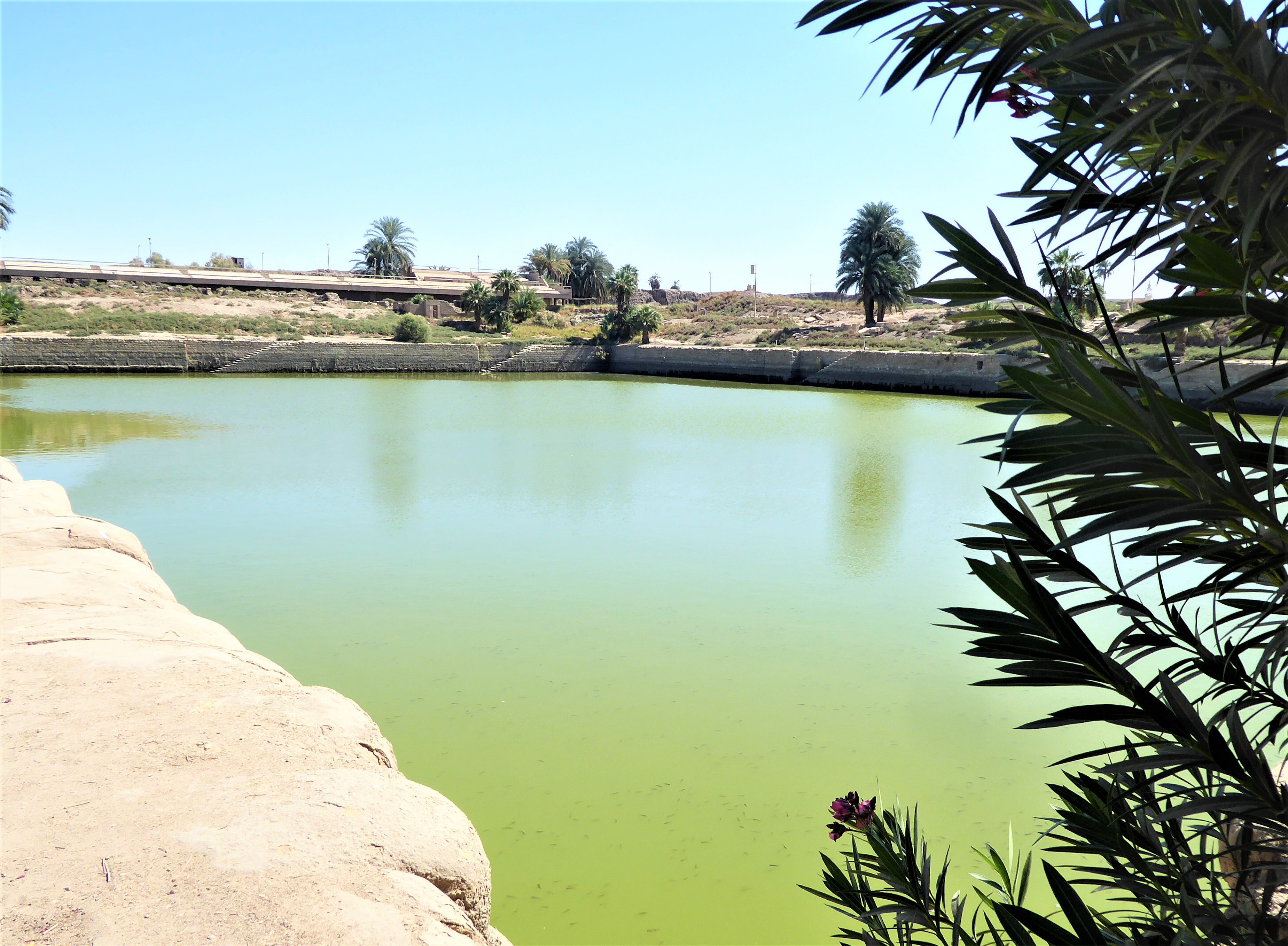
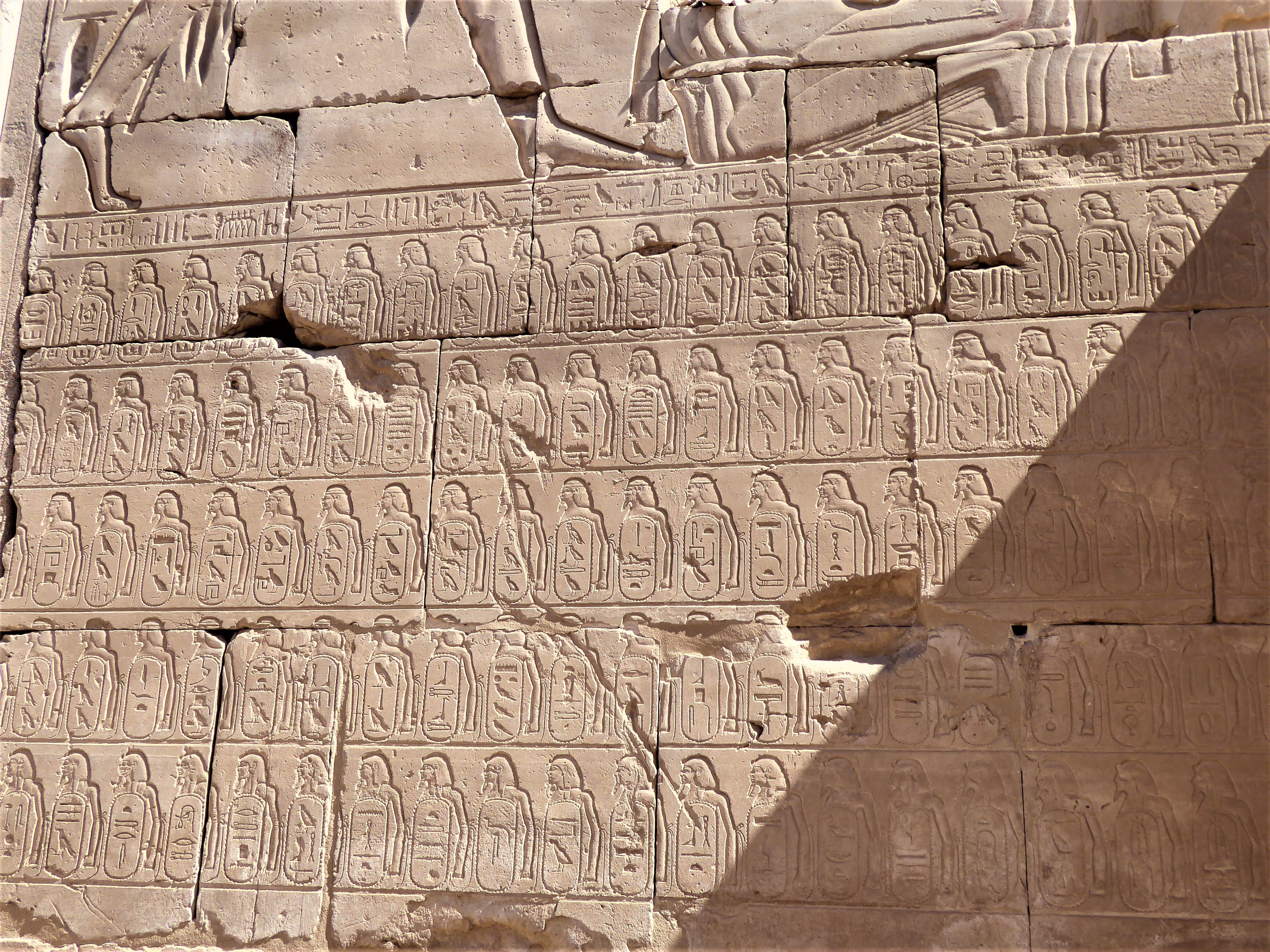

Luxor Temple
Only a short distance away for Karnak, about 3km, is Luxor Temple, which was part of the city of Thebes too. Unlike most of the Ancient Egyptian temples which are dedicated to a deity, Luxor Temple is dedicated to the Pharaoh’s Ka. The temple has been in existence since 1400 BC and pharaohs had added to it through the years including Ramesses II, Tutankhamen, Amenhotep III (Akhenaten’s father and Tutankhamen’s grandfather) and Alexander the Great. It’s a pity I saw Luxor Temple after Karnak, bloody hard act to follow! It made sense though to start from the furthest and make our way back as my hotel was closer to Luxor Temple too.
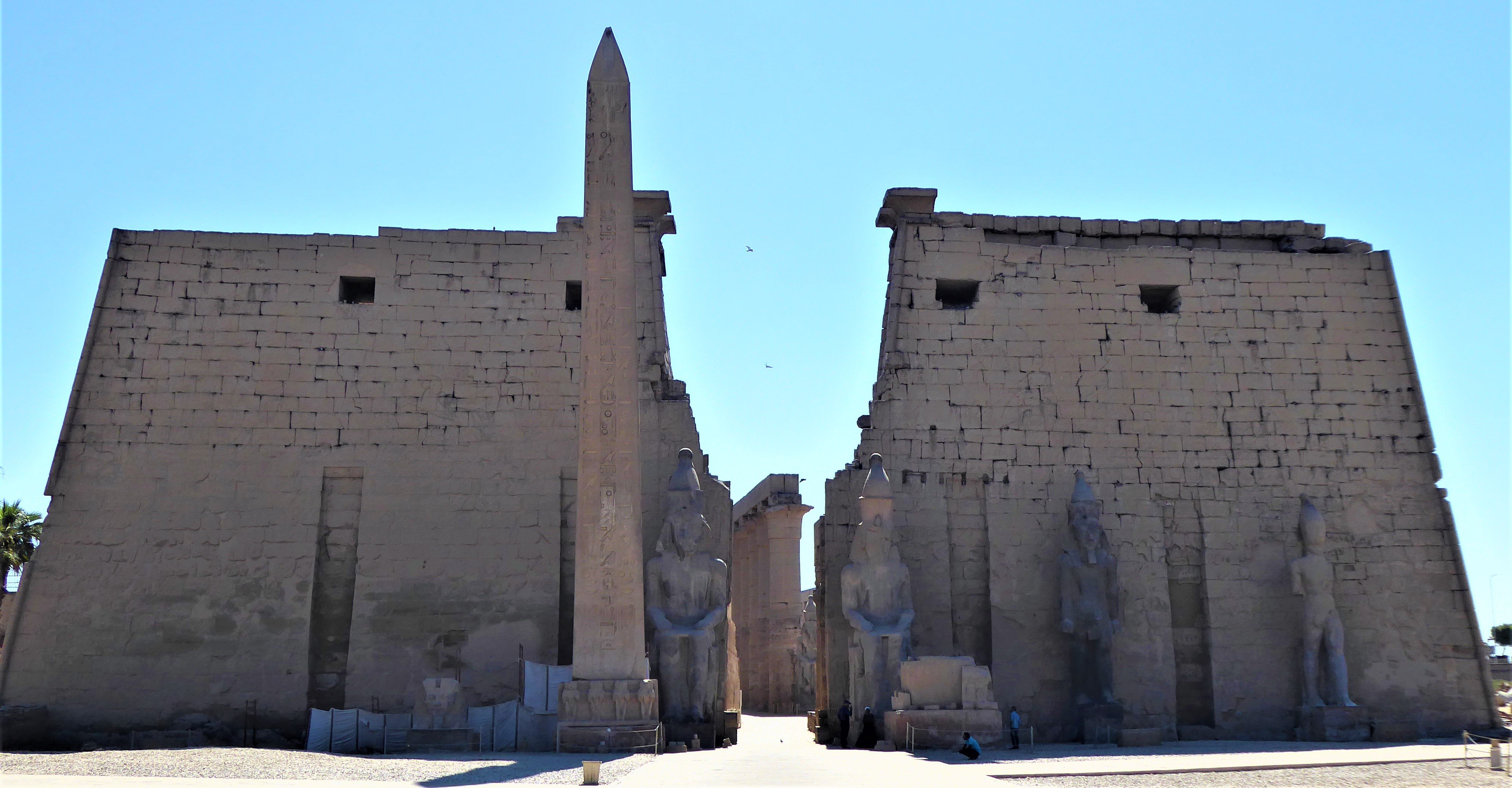
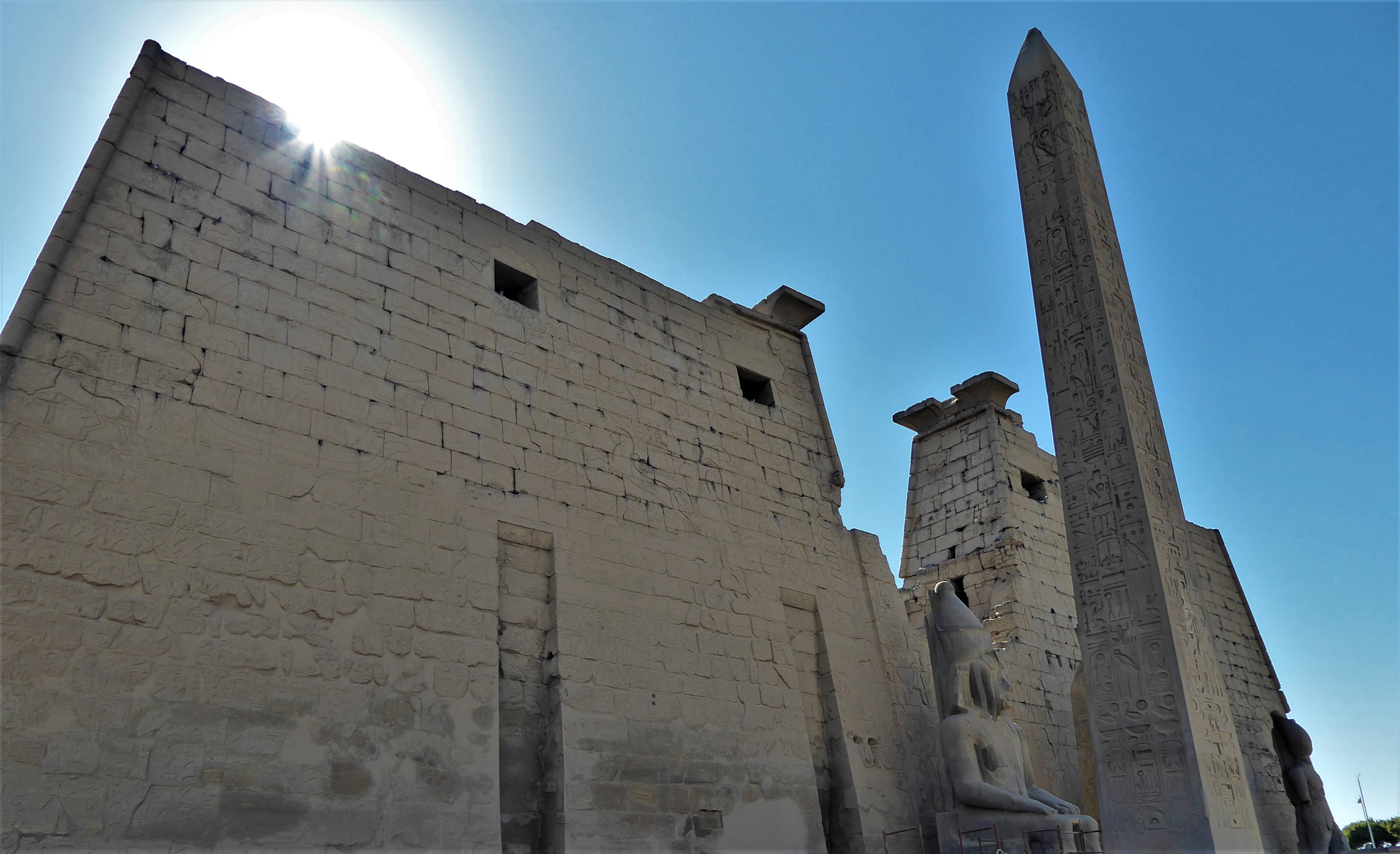

You don’t access Luxor Temple as you would have in ancient times, instead the entrance is at the start of the first pylons, the entrance had two big obelisks on either side which had three black granite statues either side too; now only one of the obelisks remains and four of the status not in the best of conditions. The reason I mention not entering as the ancients would have is because the entry road of over 100m+ is lined with sphinx’s each with the face of Tutankhamen, his addition to the temple – an impressive addition from such a young pharaoh whose reign was so short.
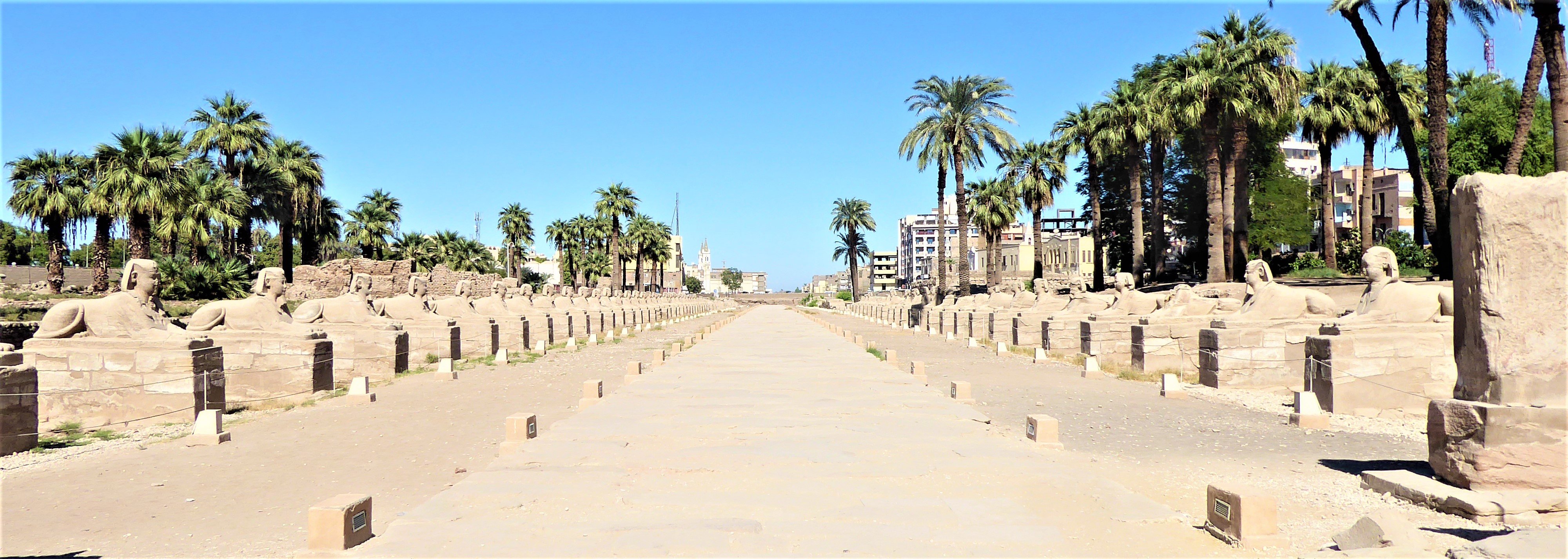
When excavation of the temple began at the end of the 19th century the temple was ¾ covered and it took 80 years (on-off) for it to be completed; the floor at the start of excavation was 15m higher than the original floor – quite an achievement!
Through the pylons is a courtyard with parts of temples which Ramesses II encompassed into his addition of the temple, his statues in black granite are distinct with their deep cut hieroglyphics. The temples around the periphery of the courtyard no longer have their ceilings and not in the best of conditions but nonetheless it didn’t take much imagination what the place would have been like, spectacular as the Ancient Egyptians only knew how to. The day was near the end and I got slightly confused as Mahmoud has been filling my brain with so much new information the past 3 days and especially today that I had a bit of a brain freeze, and overwhelmed – my excuse for forgetting so much!
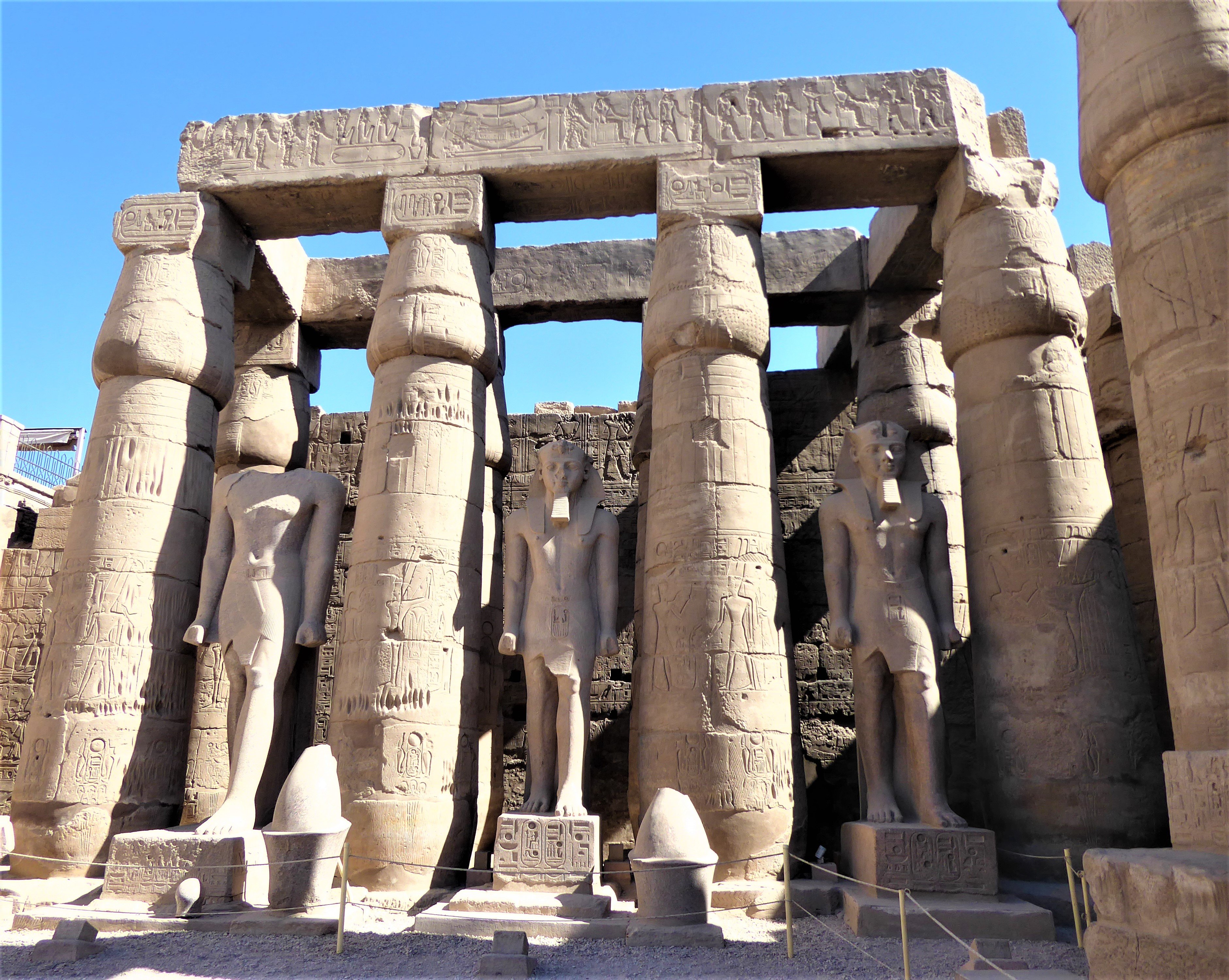
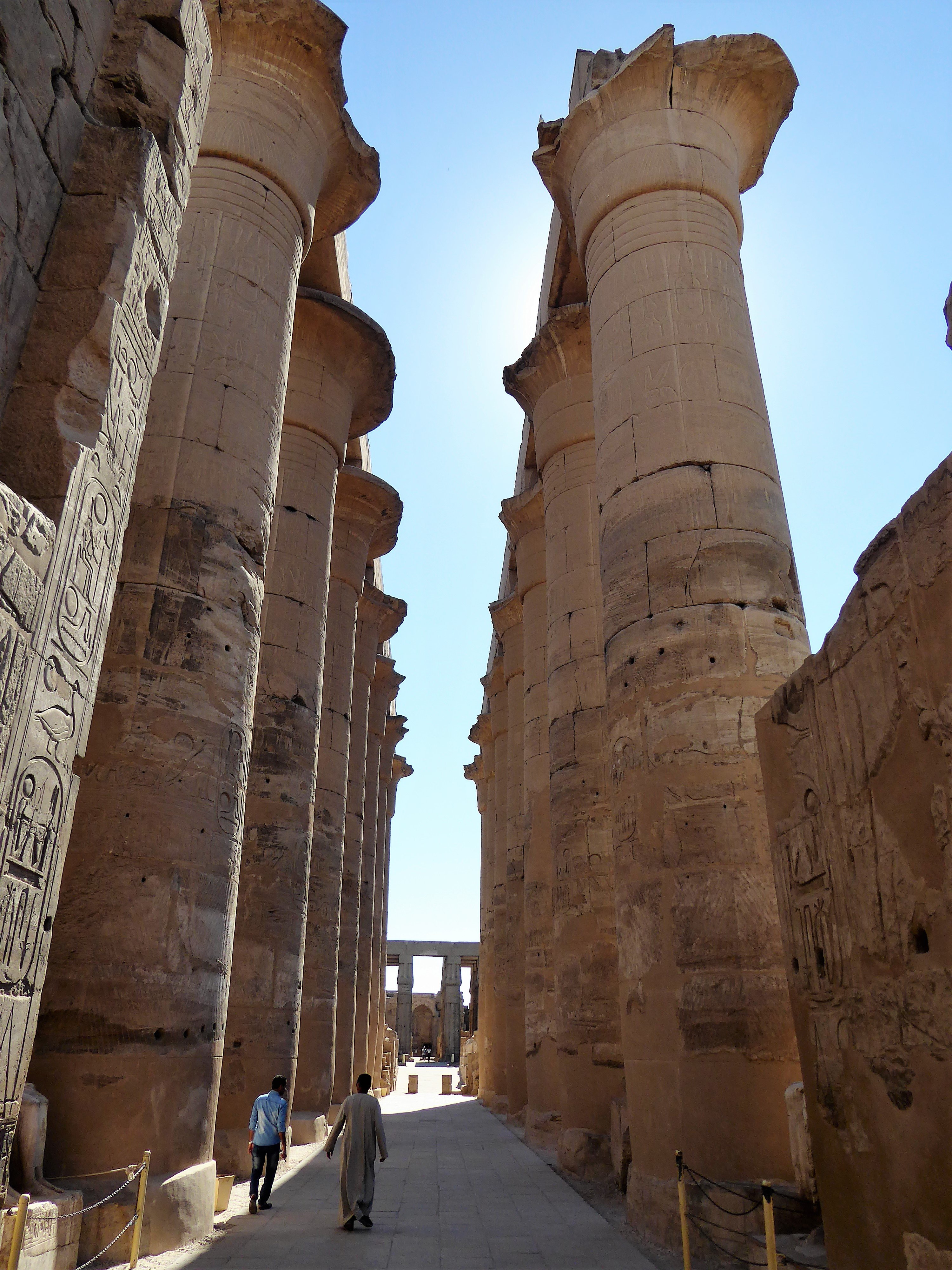
Through the second pylons (not much is left) you enter a smaller version of the hypostyle hall of Karnak, but more like a corridor, small I say, with 14 pillars of 10m high! This corridor style hall leads into another full courtyard, something more akin to a Greek/Romanesque style and I must be honest I cannot remember when this part of the temple was built, I do know that parts beyond the hall were the additions of Alexander the Great, but I’m know the courtyard was much earlier and the capitals of the pillars show that too – quite frustrated I can’t remember more!
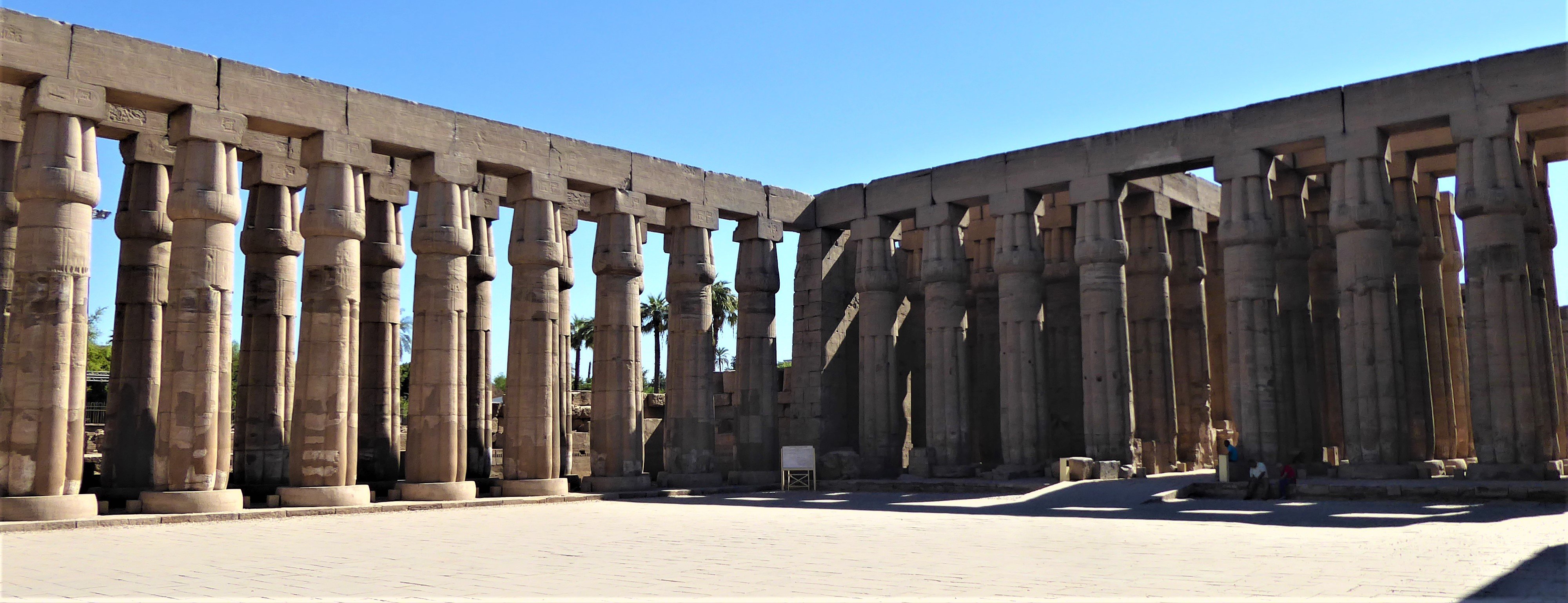
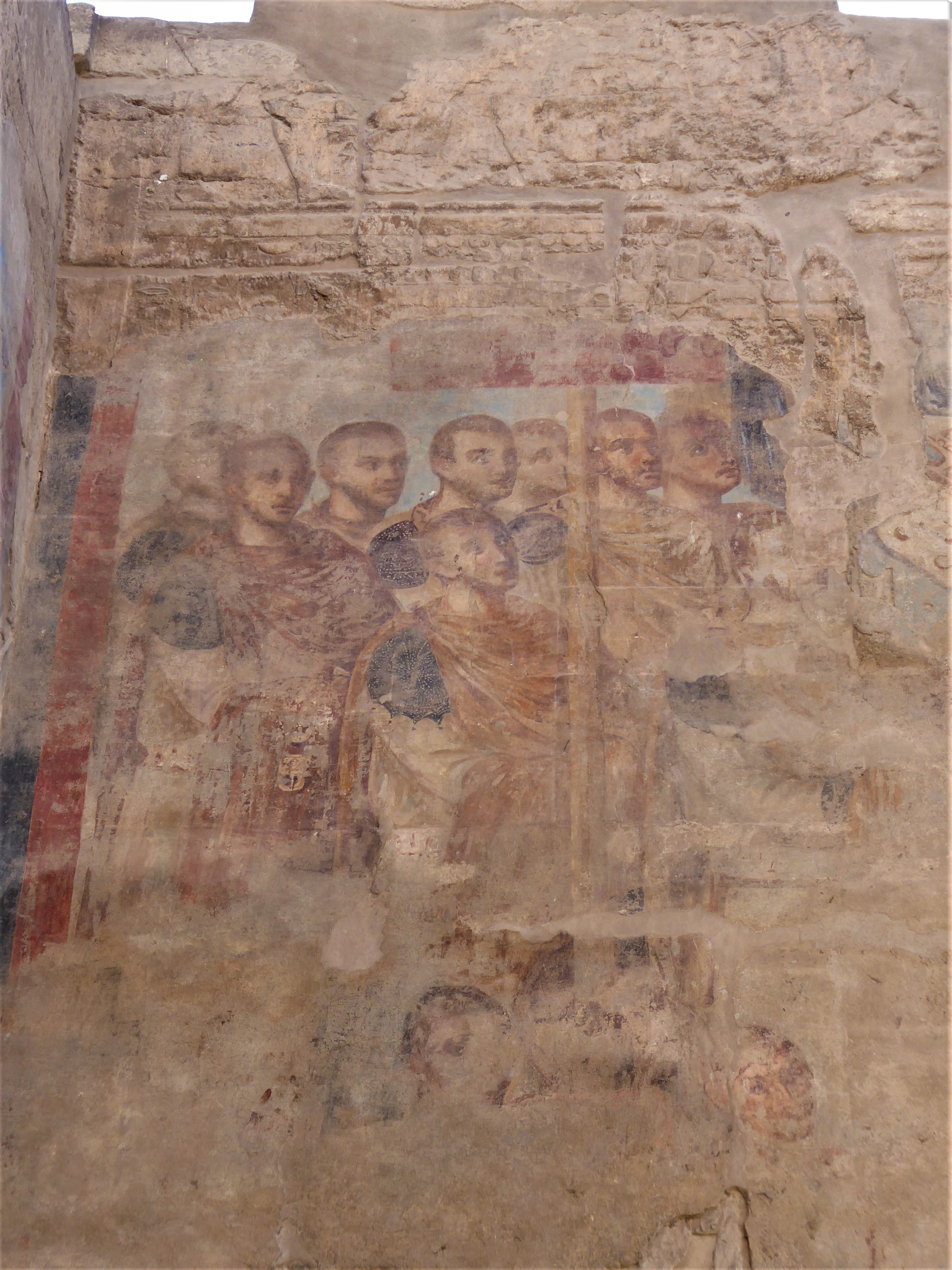
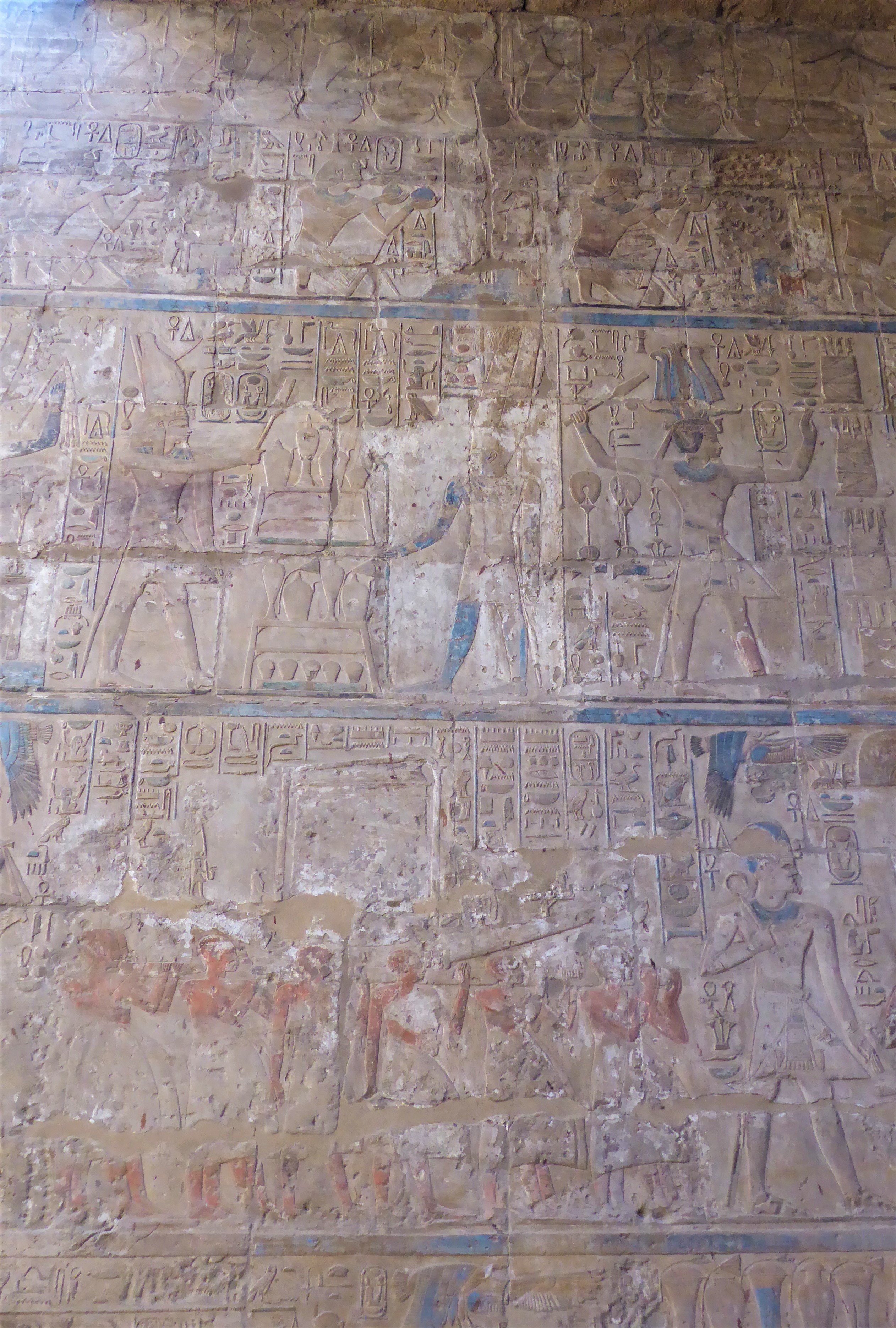
Like just about every structure from Ancient Egypt the temple was used long after the original use was past, part of Luxor Temple was even used as a Coptic Church with part of the chapel’s painted decoration still visible.
I feel like I’ve cheated myself and anyone who reads this, reading back about Karnak and Luxor I’m frustrated and a little disappointed that I can’t remember more and even more irritated with myself for not taking more notes!!! GRRRRRR!!!!
The day was at an end, I was exhausted but thrilled! This would be the last part of my Ancient Egypt trip and it was magnificent, I’d go back tomorrow! I had finally alleviated myself of a yearning to see Egypt since I was about 7 years old, a long time to scratch an itch only to leave another itch right in the middle of my back that this trip couldn’t satiate and would have to be left till my next trip…..I sure hope so.
On a separate note, a very big thank you to Mahmoud my guide from Aswan through to Luxor. If anyone needs a great guide his email address is [email protected]
Three days in Luxor to catch up on some admin relaxing by the pool next to the Nile and then I would be off to the Red Sea, Dahab.
If you’d like to take a look at where I was before Luxor, click here to see the Valley of the Kings or Hatshepsut Mortuary Temple
Some additional photos from Luxor Temple
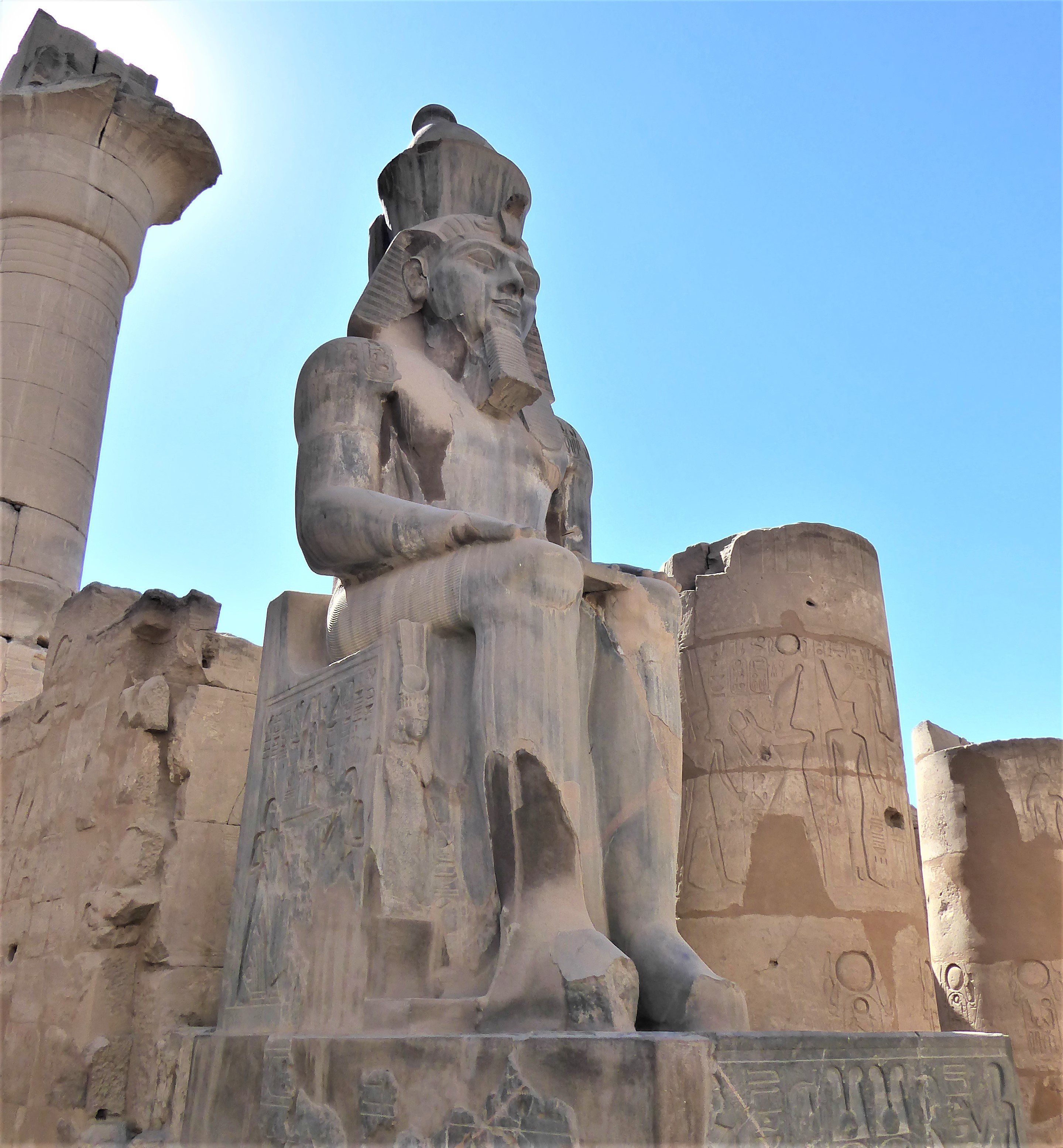
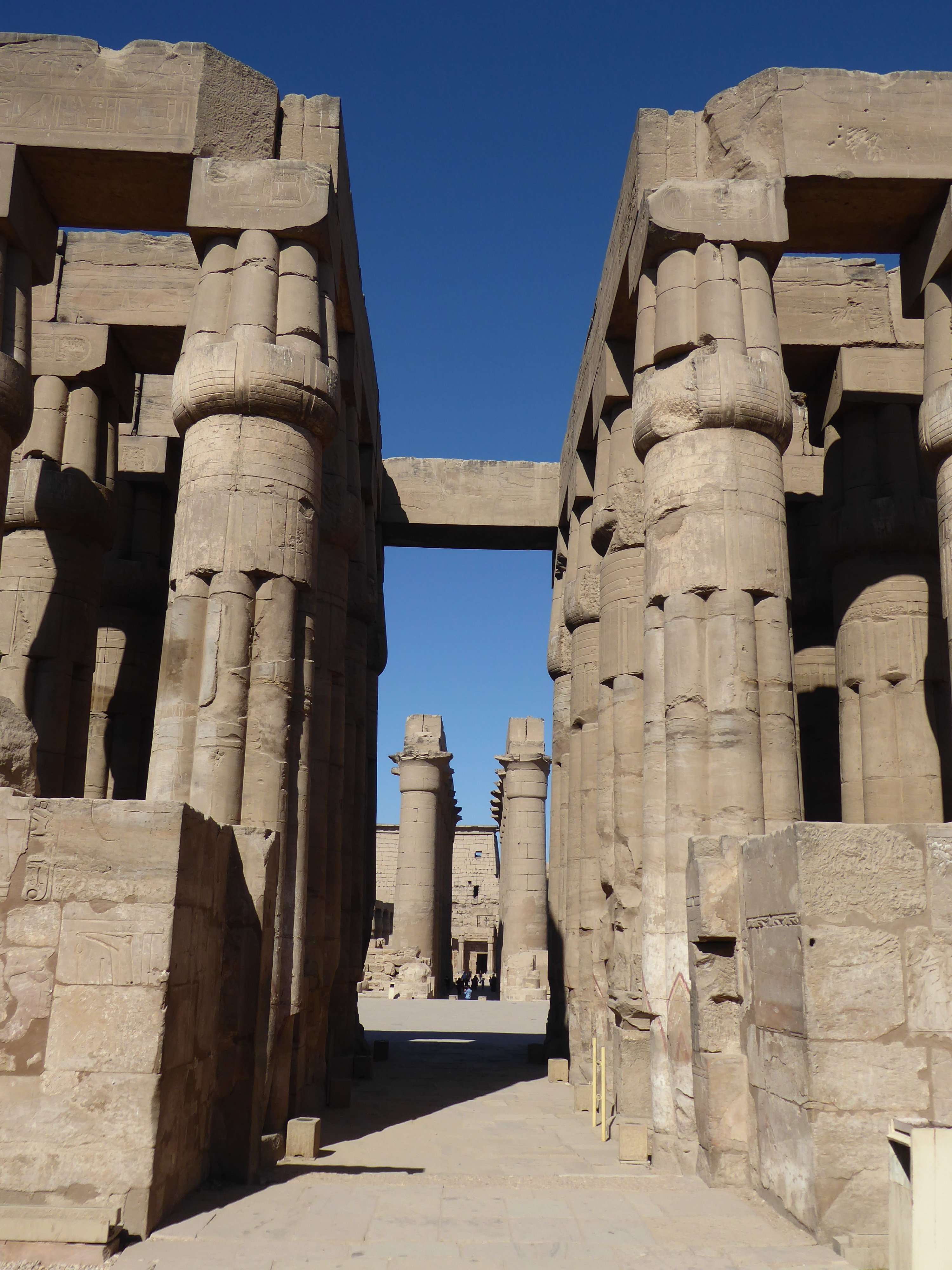
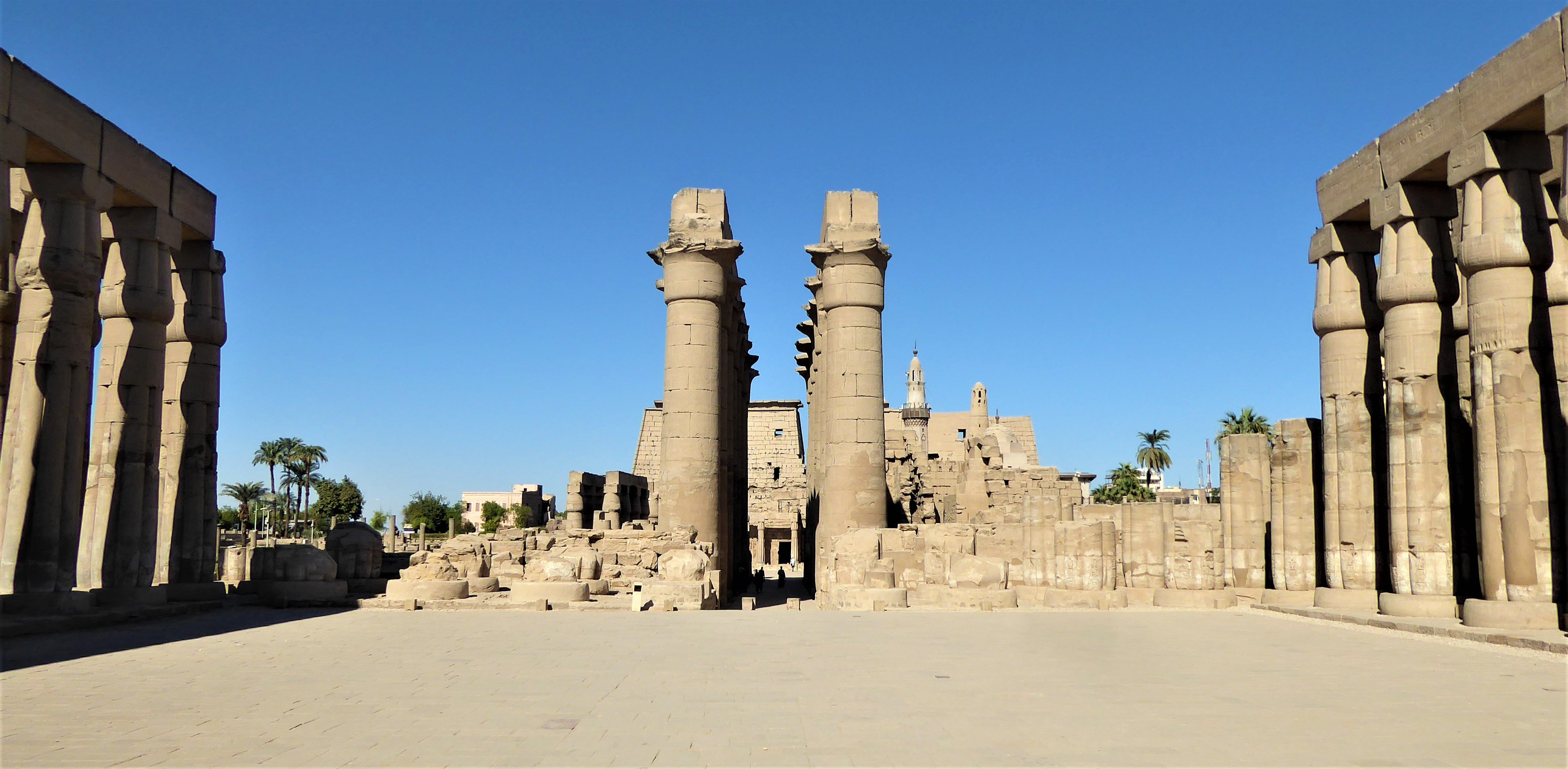
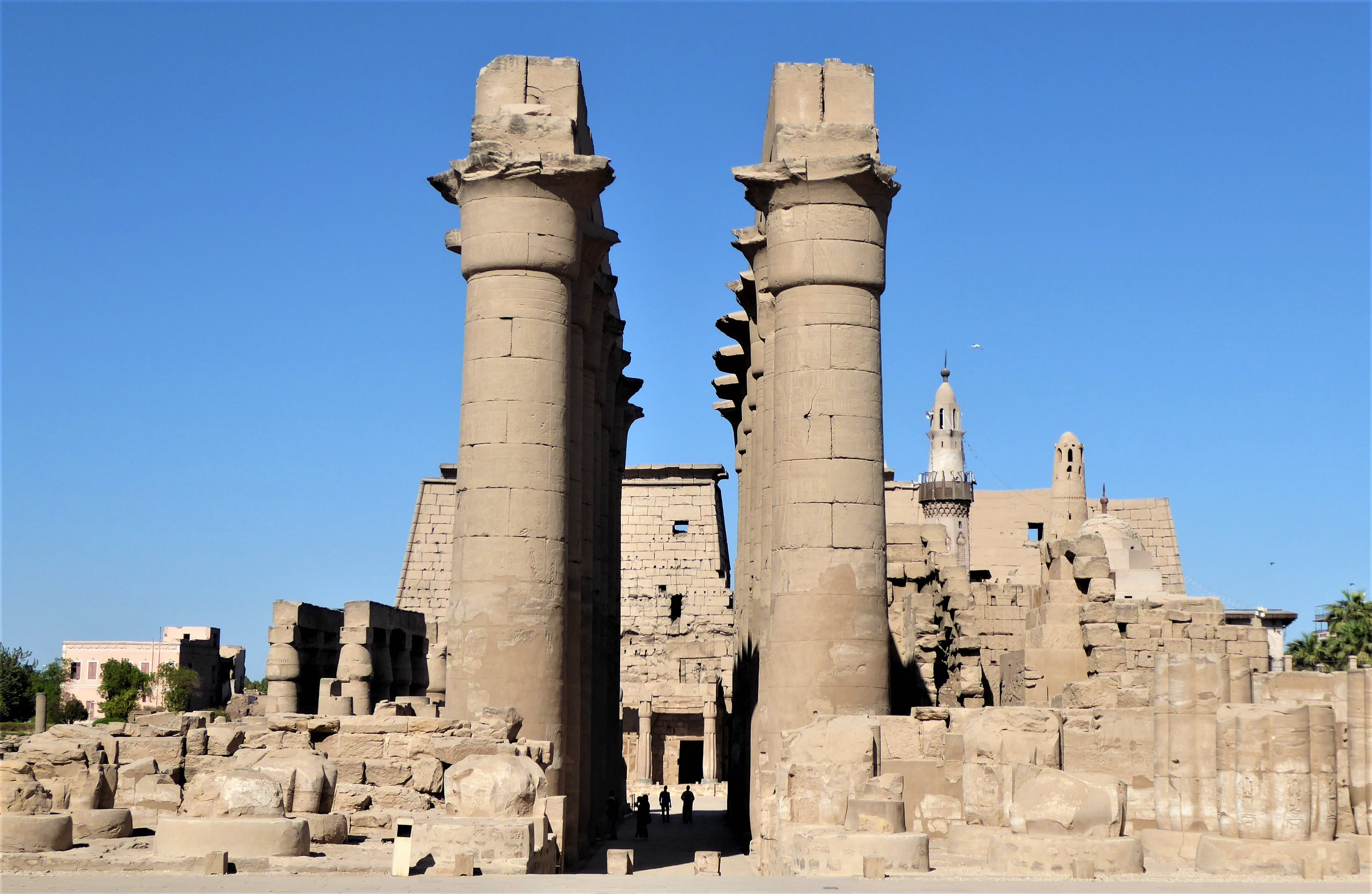
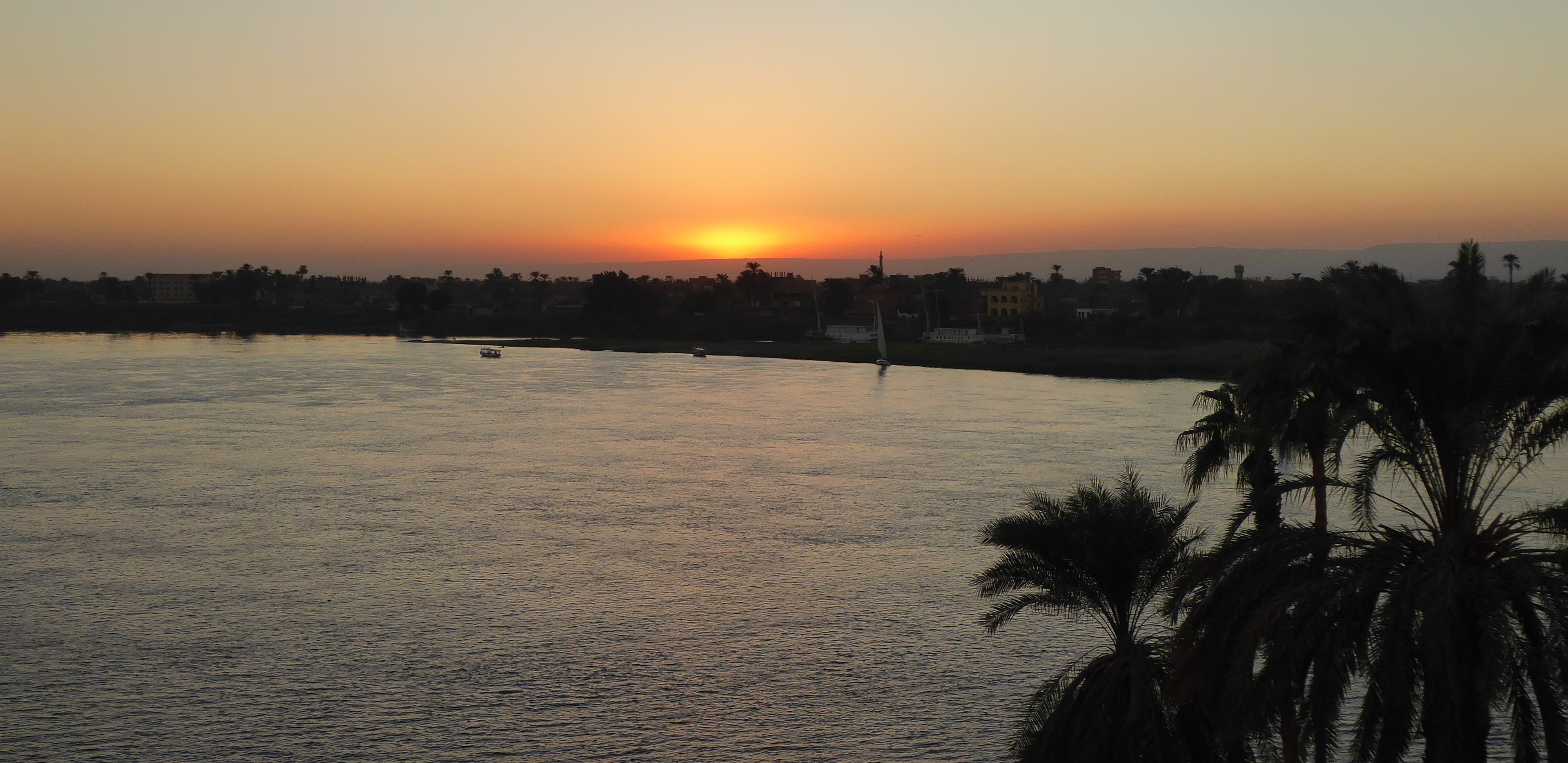

Oh WOW! Amazing photos Ryan